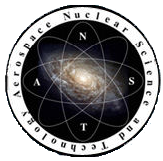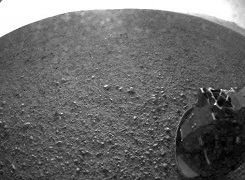Plutonium Disposition by “Downblending and Disposal”
 The subject of plutonium disposition has a long history that dates back to the end of the Cold War, combining complex technical, policy, and diplomatic issues. A discussion of this history is timely because the Department of Energy recently released a report1 evaluating technological alternatives to the current approach of disposing of plutonium using mixed oxide (MOX) fuel. One option-referred to as "downblending and disposal"-was assessed favorably in terms of cost, timeliness, and technical risk, but it introduces new technical and political challenges. This blog post provides a brief summary of the storied history of plutonium disposition.
The subject of plutonium disposition has a long history that dates back to the end of the Cold War, combining complex technical, policy, and diplomatic issues. A discussion of this history is timely because the Department of Energy recently released a report1 evaluating technological alternatives to the current approach of disposing of plutonium using mixed oxide (MOX) fuel. One option-referred to as "downblending and disposal"-was assessed favorably in terms of cost, timeliness, and technical risk, but it introduces new technical and political challenges. This blog post provides a brief summary of the storied history of plutonium disposition.

 Cassini-Huygens is a Flagship-class NASA-ESA-ASI robotic spacecraft sent to the Saturn system. It has studied the planet and its many natural satellites since its arrival there in 2004, as well as observing Jupiter and the Heliosphere, and testing the theory of relativity. Launched in 1997 after nearly two decades of gestation, it includes a Saturn orbiter Cassini and an atmospheric probe/lander Huygens that landed in 2005 on the moon Titan. Cassini is the fourth space probe to visit Saturn and the first to enter orbit, and its mission is ongoing as of 2013. It is powered by a plutonium power source, and has facilitated many landmark scientific discoveries in its mission to the stars.
Cassini-Huygens is a Flagship-class NASA-ESA-ASI robotic spacecraft sent to the Saturn system. It has studied the planet and its many natural satellites since its arrival there in 2004, as well as observing Jupiter and the Heliosphere, and testing the theory of relativity. Launched in 1997 after nearly two decades of gestation, it includes a Saturn orbiter Cassini and an atmospheric probe/lander Huygens that landed in 2005 on the moon Titan. Cassini is the fourth space probe to visit Saturn and the first to enter orbit, and its mission is ongoing as of 2013. It is powered by a plutonium power source, and has facilitated many landmark scientific discoveries in its mission to the stars.
